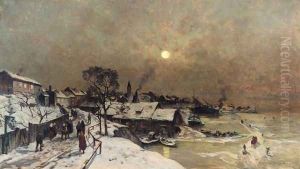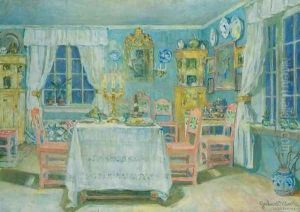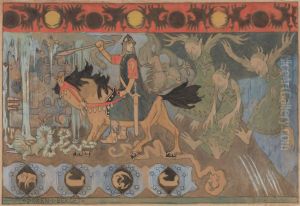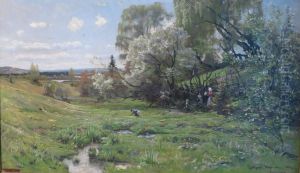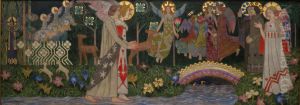Gerhard Munthe Paintings
Gerhard Peter Frantz Munthe was a notable Norwegian painter and illustrator closely associated with the National Romantic movement in Norway, which sought to develop a distinct national identity through art and culture. Born on July 19, 1849, in Elverum in the south of Norway, Munthe was part of a family with many talented painters, including his brother, Ludvig Munthe, who was also a well-known landscape painter.
Munthe showed artistic talent from a young age and was initially self-taught. Later, he studied at the Royal School of Art and Design in Oslo (then called Christiania) and also trained in Düsseldorf, Germany, which was an important center for art studies at the time. Eventually, he continued his studies in Paris.
In the early stages of his career, Munthe primarily painted landscapes inspired by the Norwegian countryside. His work during this period was characterized by a realistic portrayal of nature. However, as his style evolved, he became more interested in decorative arts and historical motifs, often drawing from Norwegian folklore and legends. Munthe's distinctive style combined elements of Art Nouveau with traditional Norwegian folk art, which became evident in his later works.
One of his most significant contributions to Norwegian art was his work on the interior design of the Håkonshallen in Bergen, where he created large murals and tapestries that incorporated Norse medieval themes. Munthe was also a prolific book illustrator, and his illustrations for Norwegian fairy tales helped revitalize interest in national folklore. His designs and illustrations were influential in the development of the Arts and Crafts movement in Norway.
Munthe's work was recognized in his time, and he received several awards and honors. He was appointed a Knight of the Royal Norwegian Order of St. Olav for his contributions to Norwegian art and culture. Munthe continued to be active in the art world until his death on January 15, 1929, in Bærum. His legacy endures, and his works are still celebrated for their unique blend of Norwegian tradition and the modern artistic movements of his time.
